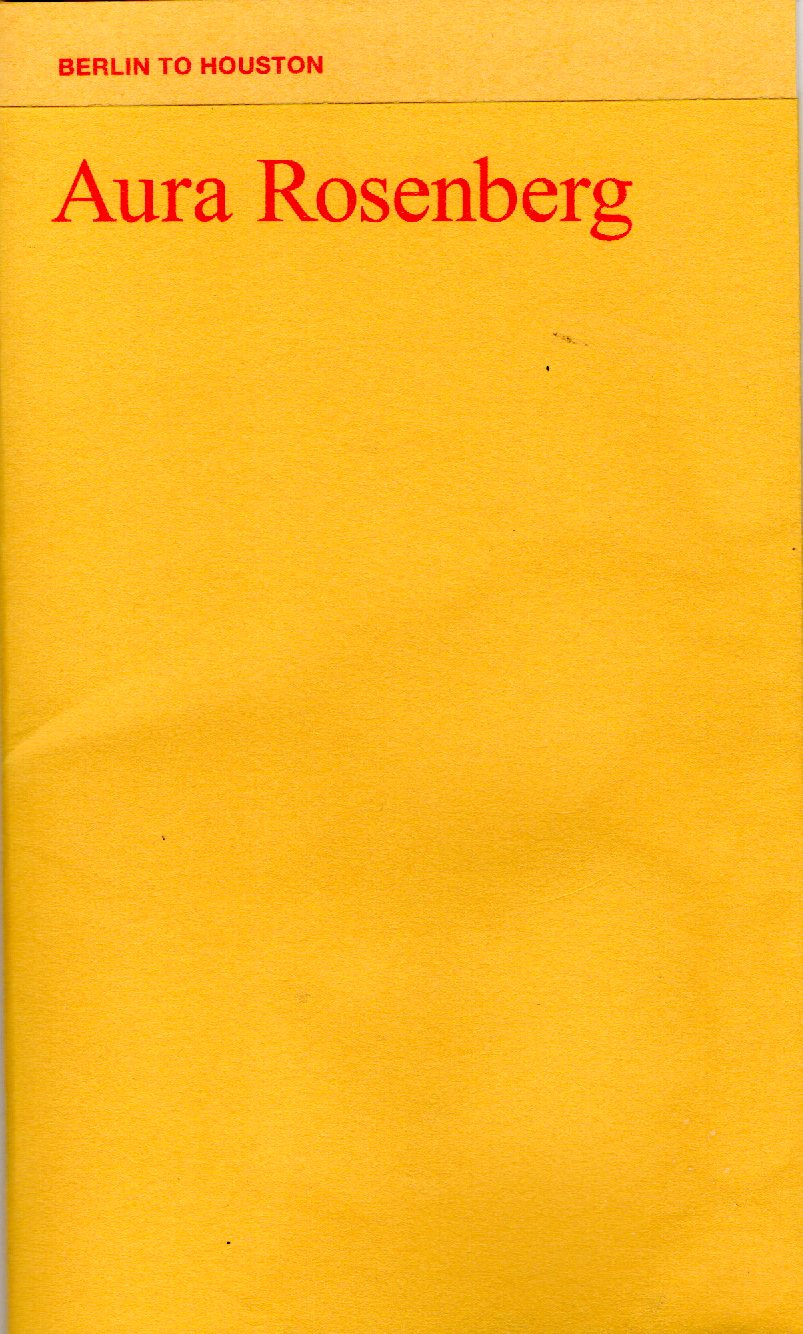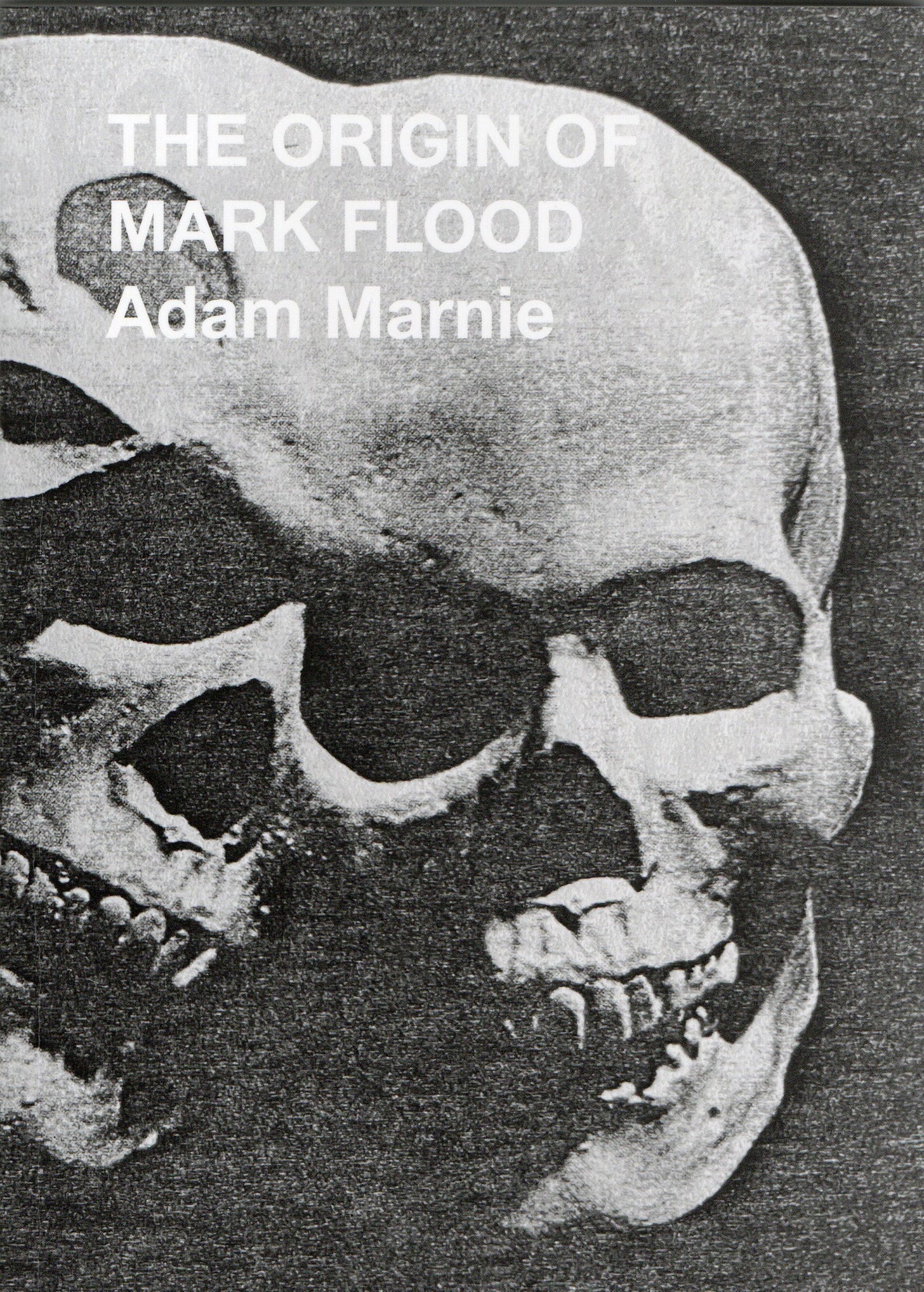I discovered the work of Adam Marnie at Basket Books, when I first visited it. They carried his magazine, F Magazine, and several of his chapbooks for sale there. Looking at this small body of work, I thought, “How did I not know about this stuff earlier?” I felt this even more when I went to F Magazine’s website and learned that the magazine had been published since 2014. How did I not know that a guy in Houston had been publishing an ambitious magazine for years? The answer is obvious—Marnie wasn’t in Houston for most of F Magazine’s existence. F Magazine was an outgrowth of a project called SH T, which stood for Shame, Holes and Tenderness. SH T was a combination of publishing and exhibitions (two things that I have always seen as opposite sides of the same coin). F Magazine was begun while Marnie was teaching at RISD and CUNY. He thought of it as a “fake magazine”; a “sculpture of a magazine.” Hearing this made me think he was describing a species of imposter syndrome, as if he were afraid that if he couldn’t call his saddle-stitches, 100-page publication a magazine for some reason. But between issue 1 and the current issue 11, it has evolved into something Marnie is willing to admit is a magazine. He faked it until he made it, I guess. And like a “real” magazine, it has many contributors—some are artists for whom F Magazine is a venue for showing their work, either in terms of visual reproduction or personal statements, or both, in the case of Bane and Clussy the Clown. Some pieces are interviews presented in Q&A format. There are poems and photographs. Things I didn’t see in issue 11 (the only issue I’ve read): journalism and criticism. There didn’t seem to be any third-person writing about other people or artworks. (For example, this blog post is an especially minor example of “journalism.”)
Marnie also publishes non-magazine publication. He started in 2016 mostly copublishing with others, but in the past couple of years, F has published a series of small publications. I have one of these called Berlin to Houston by Aura Rosenberg, an artist who was living in Berlin when she wrote this. It describes her attempt to mail two pieces of art to Marnie for an exhibit, how the art became lost in DHL’s system but nonetheless managed to eventually arrive in Houston OK. The essay is broken up into little bits, ranging from one sentence to several short paragraphs, each given its own page, as if they were little poems. But it doesn’t read like separate poems; it reads like a short essay arranged in a very unusual way. She starts by reflecting on Georg Philipp Friedrich Freiherr von Hardenberg, better known to history as Novalis, an early exemplar of German Romanticism. He is connected to the saga of the DHL packages because she mailed the package from a post office on Novalisstraße, a one-block street in Berlin. They were mailed to Marnie for an exhibit in his house gallery, F. But I think because the shipment was delayed, the two drawings were never displayed. Marnie said, “Aura’s work was never exhibited, which transformed into my publishing that writing.”
But that leads to the other part of the F empire, Marnie’s house gallery. I have always liked apartment and house galleries, like Front Gallery, where I have been seeing and enjoying exhibits since 2011. This type of gallery is inherently different from storefront commercial galleries (although it may be commercial), alternative art spaces (although they are essentially alternative), and institutions. They have a highly personal aesthetic. Starting in 2019, Marnie started exhibiting at his house under the name of F. Not “F Gallery”; just F. F has exhibited work by many Houston-based artists, including Lisa Lapinski, Amy Blakemore, and Mark Flood. F’s current exhibit are paintings by Matt Kenney.
Marnie worked as an assistant for Mark Flood for a period of time, and during that time picked up a lot of information about him, which he was employed to write a two-part essay that was published in its own book, The Origin of Mark Flood. As fans of Mark Flood will know, he is a deliberately difficult artist to pin down. “Mark Flood” is the third name he has gone by (that we know of). First he was John Peters, then he became Perry Webb. But Marnie also points out that he wrote in art magazines under many different pseudonyms, and he has used stand-ins to confuse matters even further. In this way, Flood reminds me of Fernando Pessoa, who took on different names and personalities to write different literatures. (Interestingly, “pessoa” means “person” in Portuguese. Pessoa transformed himself into multiple literary pessoas.) The essay also describes Flood’s artistic activities in a more detailed way than I’ve found elsewhere, even in the catalog published along with Flood’s solo exhibit at the CAMH in 2016. One can’t depend on Flood to give a complete account of his career—it must be pieced together from Flood and other sources. Marnie used his conversations with Flood and a little additional research to come up with a fairly convincing outline of Flood’s artistic evolution. But as one reads it, one is constantly reminded that Flood is a mischievous trickster and that many parts my be misleading or incomplete. Accounting for Flood will be a challenge for future scholars.
The Origin of Mark Flood is lavishly illustrated with the various ephemera of Flood’s career. It was published by Karma Books which I believe is the publishing arm of Karma, a gallery/bookstore in New York that featured an Mark Flood exhibit. The book was published in conjunction with an exhibit at F called Face Index, a work that features prominently in The Origin of Mark Flood.
I picked up my copy of F Magazine, Berlin to Houston, and The Origin of Mark Flood at Basket Books, the best new bookstore in town.
[Please consider supporting this publication by becoming a patron, and you can also support it by patronizing our online store. And one more way to support this work is to buy books through The Great God Pan is Dead’s bookstore. ]





